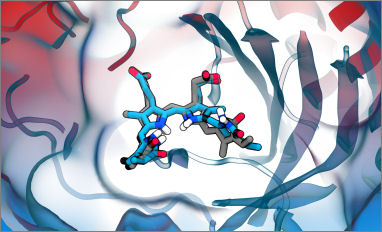 Phytochromes are ubiquitous photoreceptors responsible for sensing light in plants, fungi and bacteria. Their photoactivation is initiated by the photoisomerization of an embedded chromophore, triggering large conformational changes in the protein. Despite numerous experimental and computational studies, a lot of questions remain unanswered: what happens to the chromophore just after light absorption? How does the environment affect the entire activation process?
Phytochromes are ubiquitous photoreceptors responsible for sensing light in plants, fungi and bacteria. Their photoactivation is initiated by the photoisomerization of an embedded chromophore, triggering large conformational changes in the protein. Despite numerous experimental and computational studies, a lot of questions remain unanswered: what happens to the chromophore just after light absorption? How does the environment affect the entire activation process?
To go beyond the current knowledge and finally reach an atomistic view of bacterial phytochromes' photoactivation, we combined a range of different computational techniques, able to simulate the movement of atoms from the initial photochemistry down to the subsequent slower relaxation processes.
Link: https://www.nature.com/articles/s41467-022-34640-8


